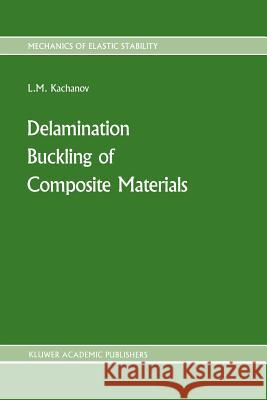Delamination Buckling of Composite Materials » książka
Delamination Buckling of Composite Materials
ISBN-13: 9789401077699 / Angielski / Miękka / 2012 / 96 str.
LIOn Delamination of Laminated Composites (a) Fiber-Reinforced Composites Considerable technological advances in the production of high-strength fibers (graphite, boron, etc.) have led to a wide use of light high-strength composite materials (graphite epoxy, boron-epoxy, etc.). It is expedient, to make thin walled composite rods, plates, and shells from such materials. Plates can be made by bonding a set of unidirectional thin fiber layers, Fig.l.l. Such plates are orthotropic, as a rule. A random short-fiber composite is shown in Fig. 1.2. Fiber-reinforced composites are widely used in thin-walled aircraft structures because of their specific high strength. For example, the graphite-epoxy composite is characterized by a unidirectional tensile strength of 1.4 GPa while the density is 1.6 Mg/rrt? . For comparison, we may take a steel (steel 4340) whose corresponding properties are identified by values like 1.2 GPa and 7.8 Mg/rrt? . 1. INTRODUCTION Figure 1.1 2 1.1. On Delamination of Laminated Composites Figure 1.2 3 1. INTRODUCTION It is characteristic for laminated plastic material to possess a fairly low bonding. Therefore, low-velocity impacts and defects in manufacturing lead to local delamination. (b) Linear Problems of Delamination Buckling Delamination can significantly reduce the compressive strength and stiffness of the laminate. Local delamination can be considered as a crack in the bond. Under buckling there appears a high interlaminate stress at the crack edge that leads to a spreading of the crack. Delamination growth can lead to structural instability.











